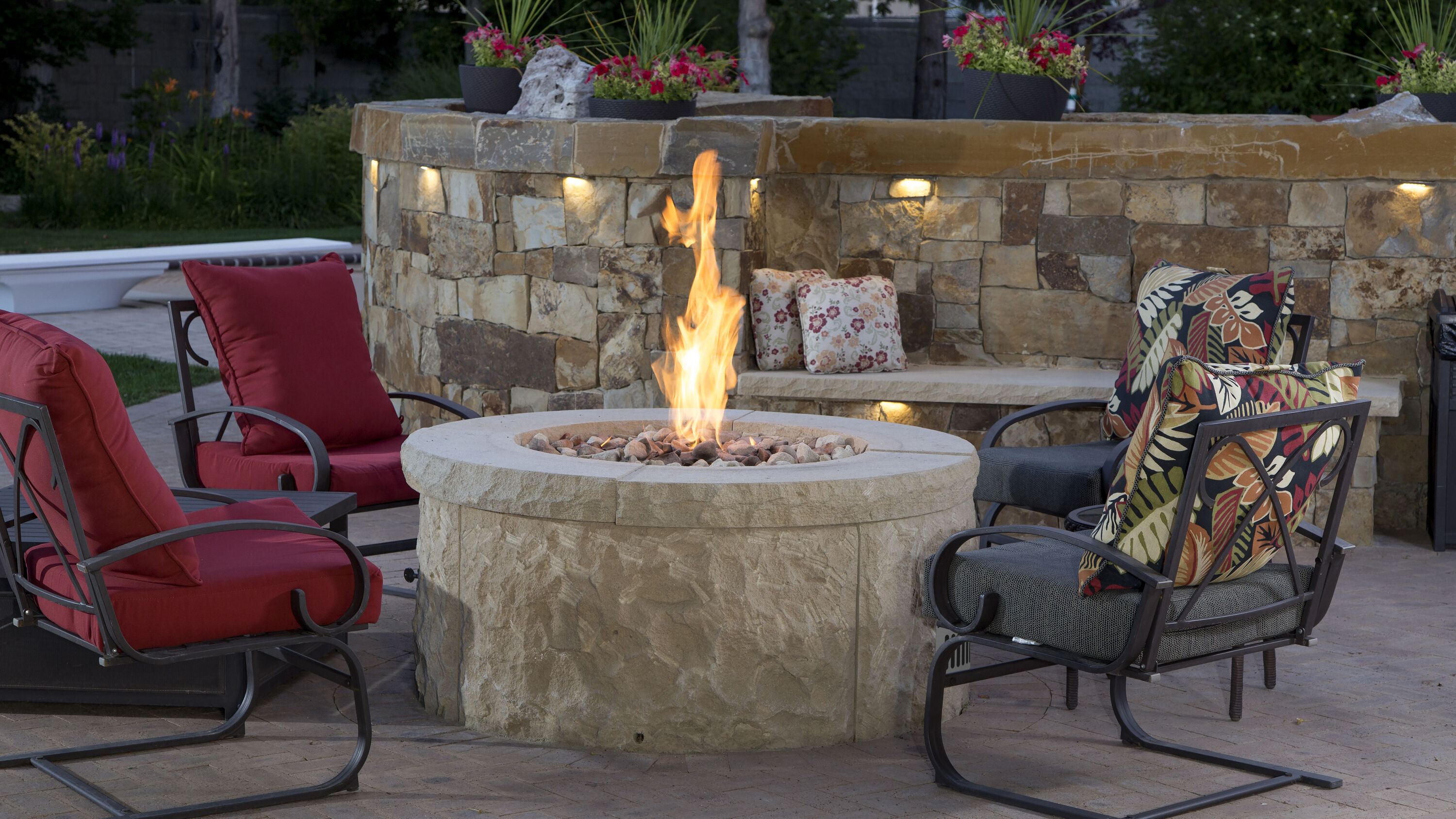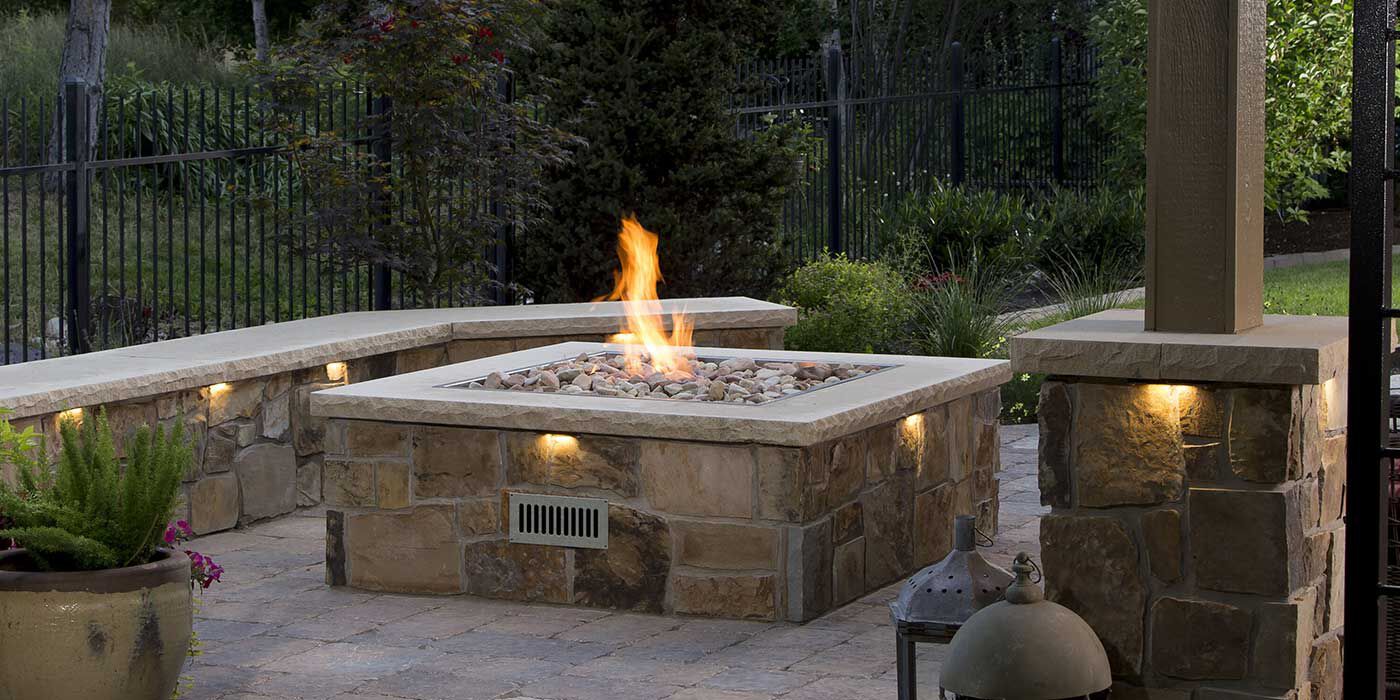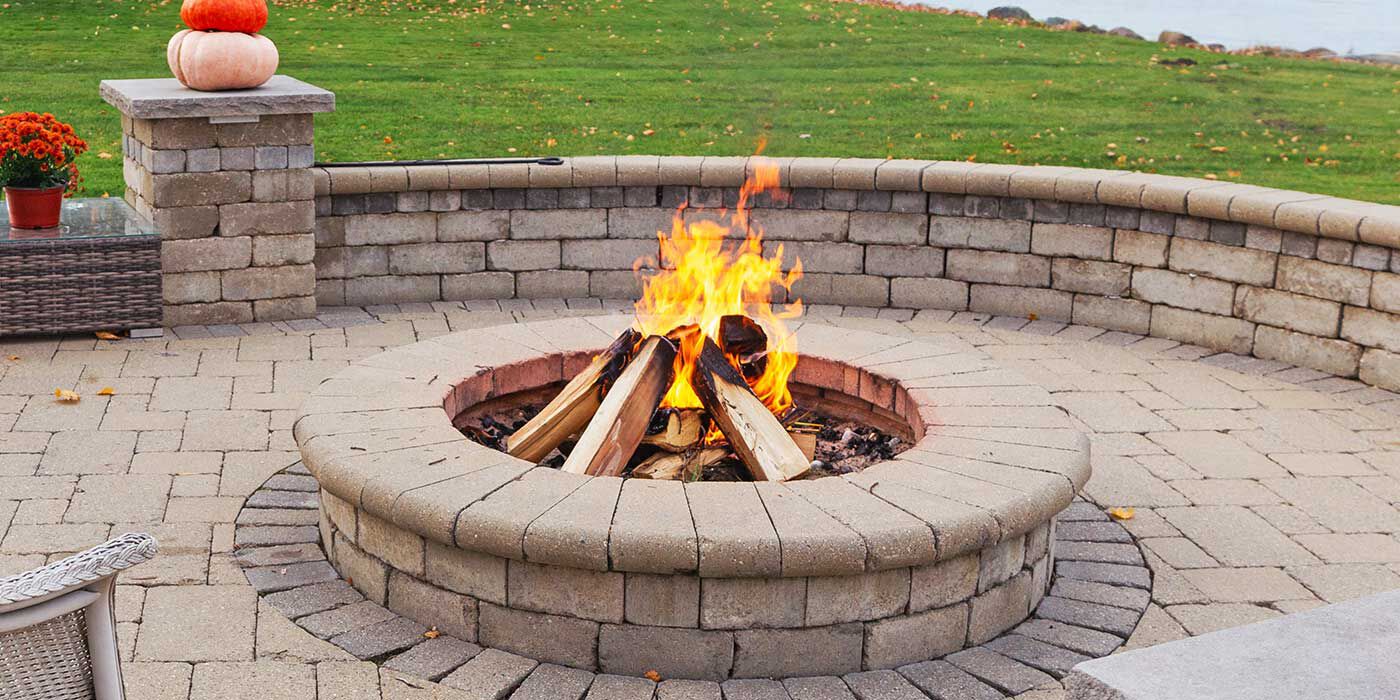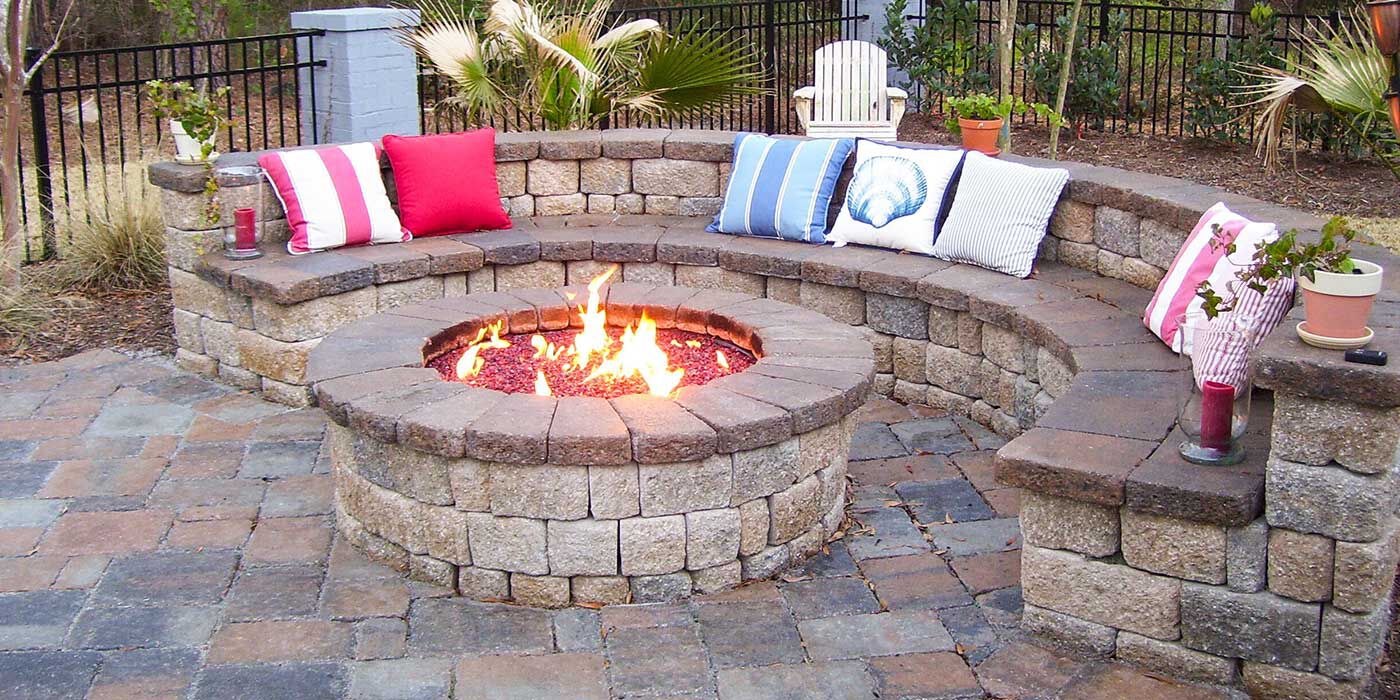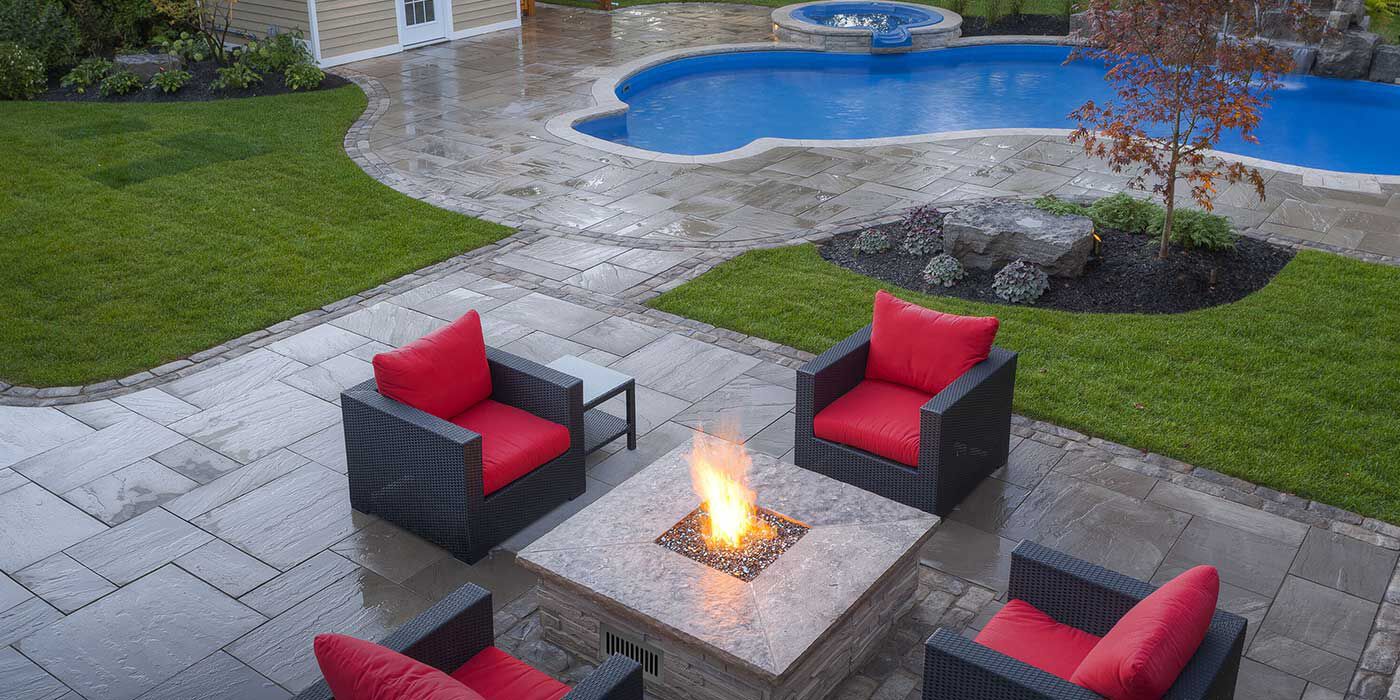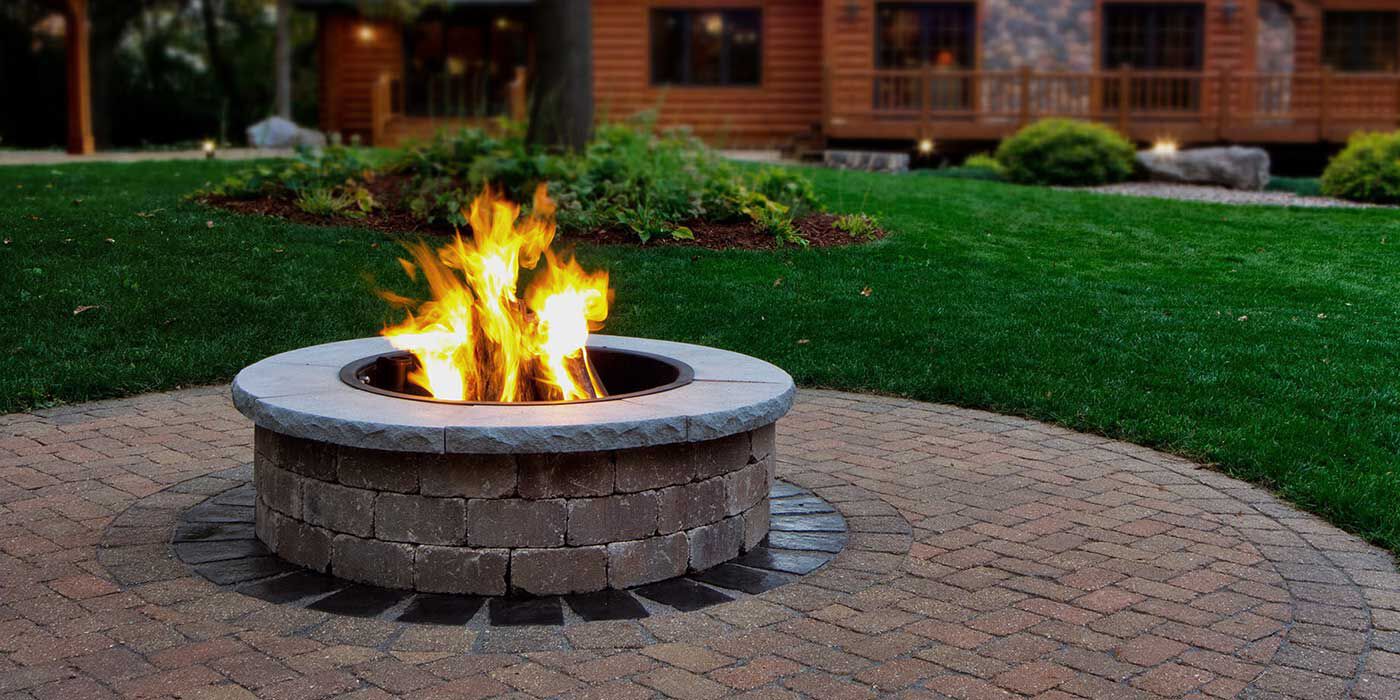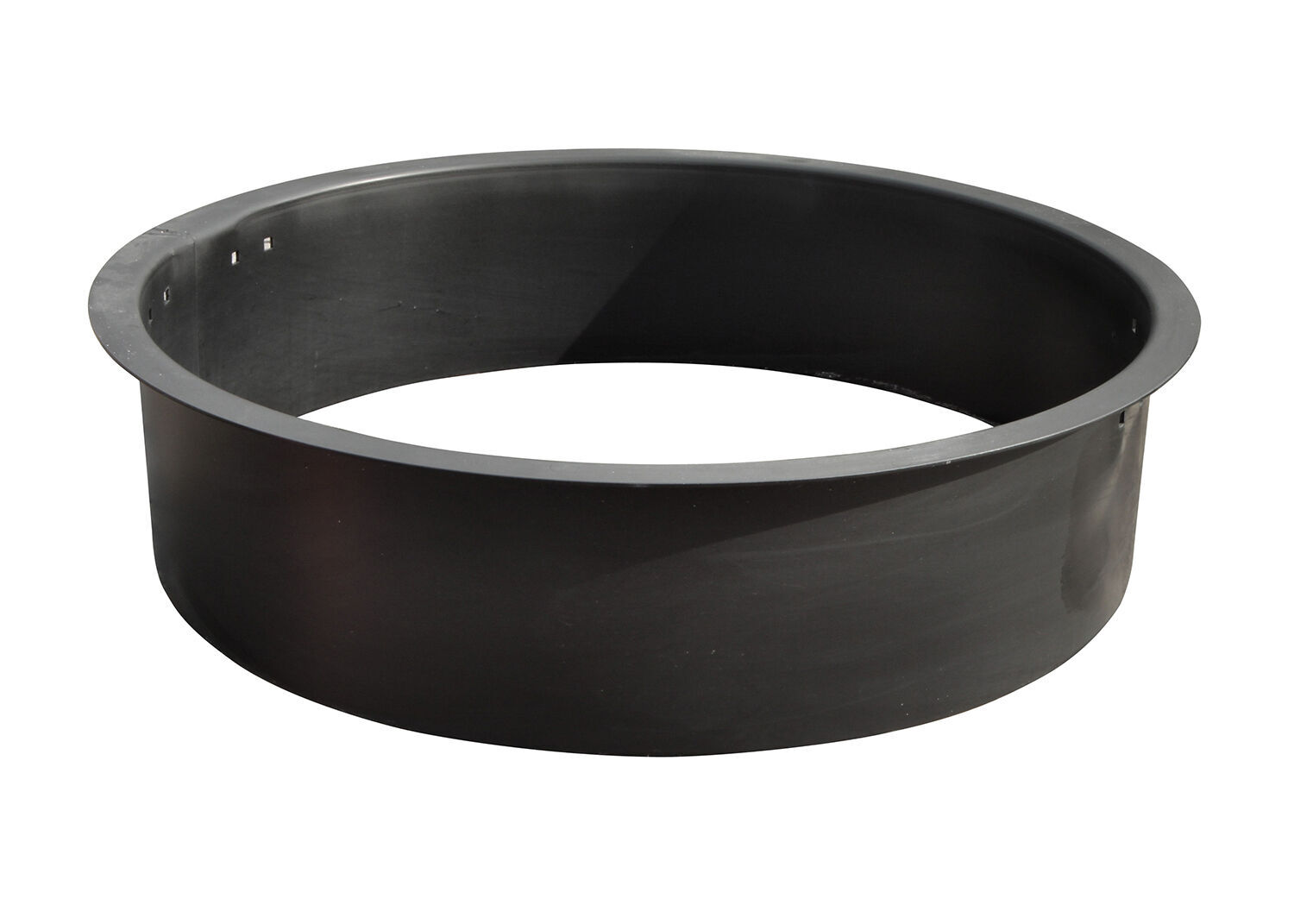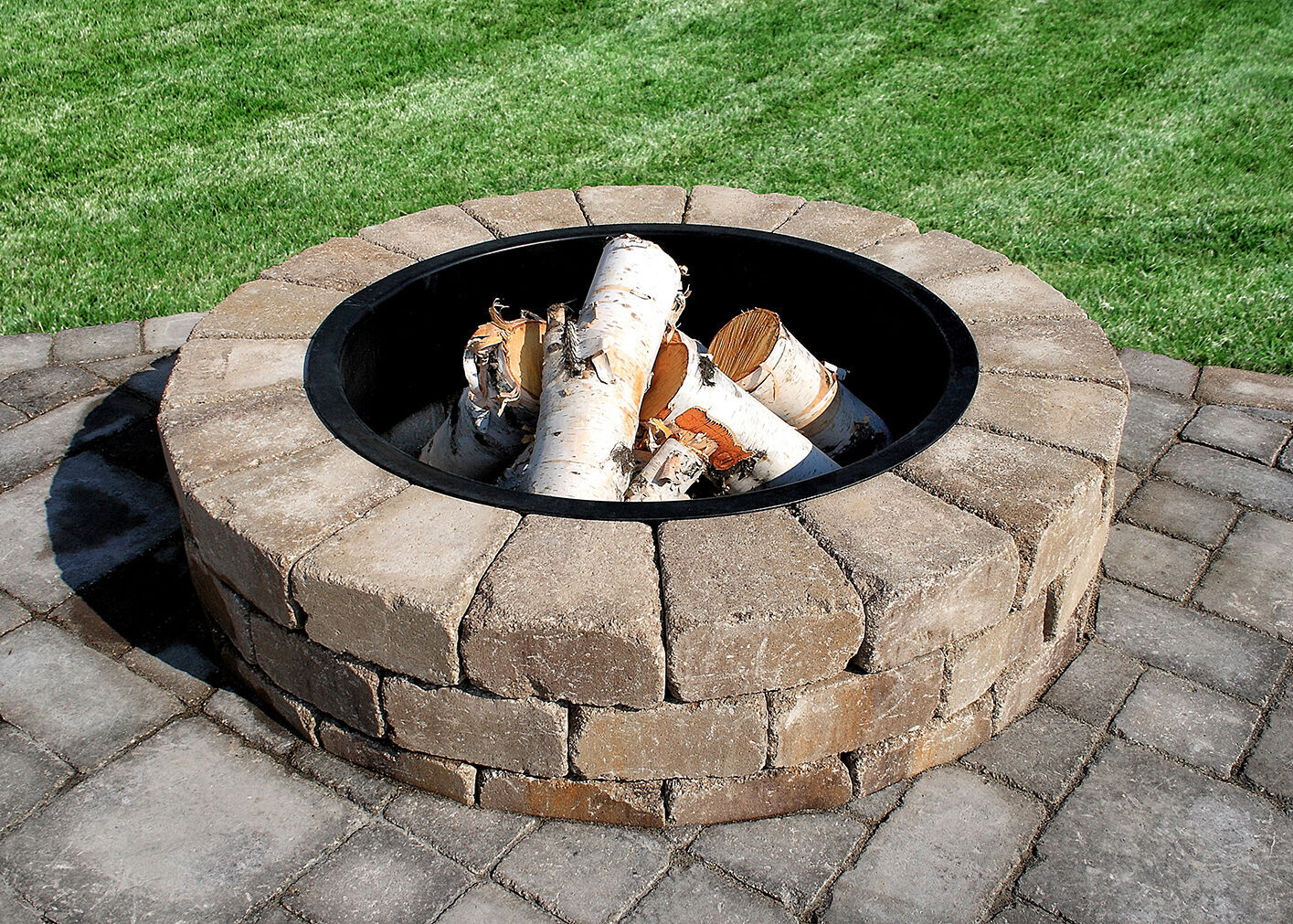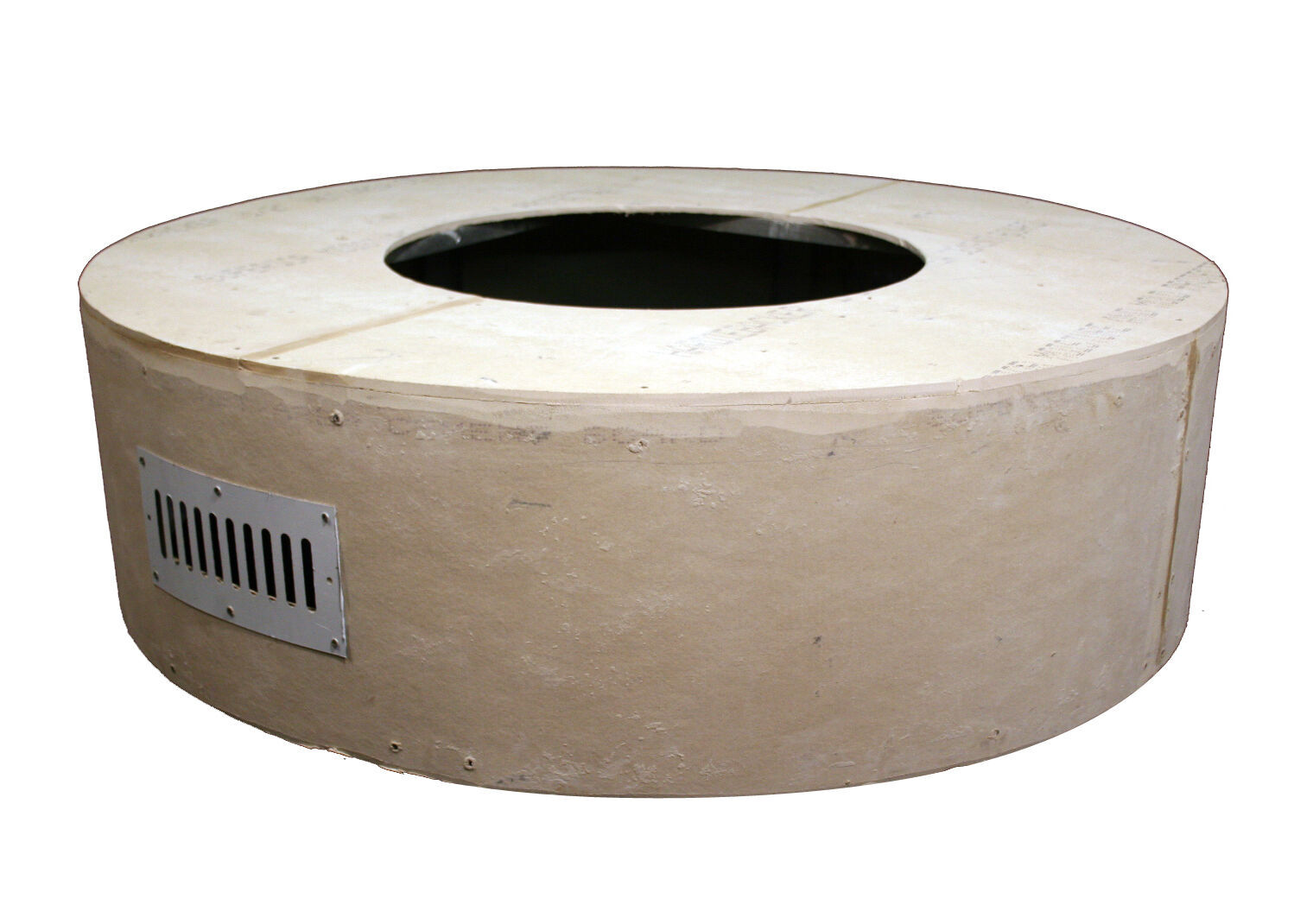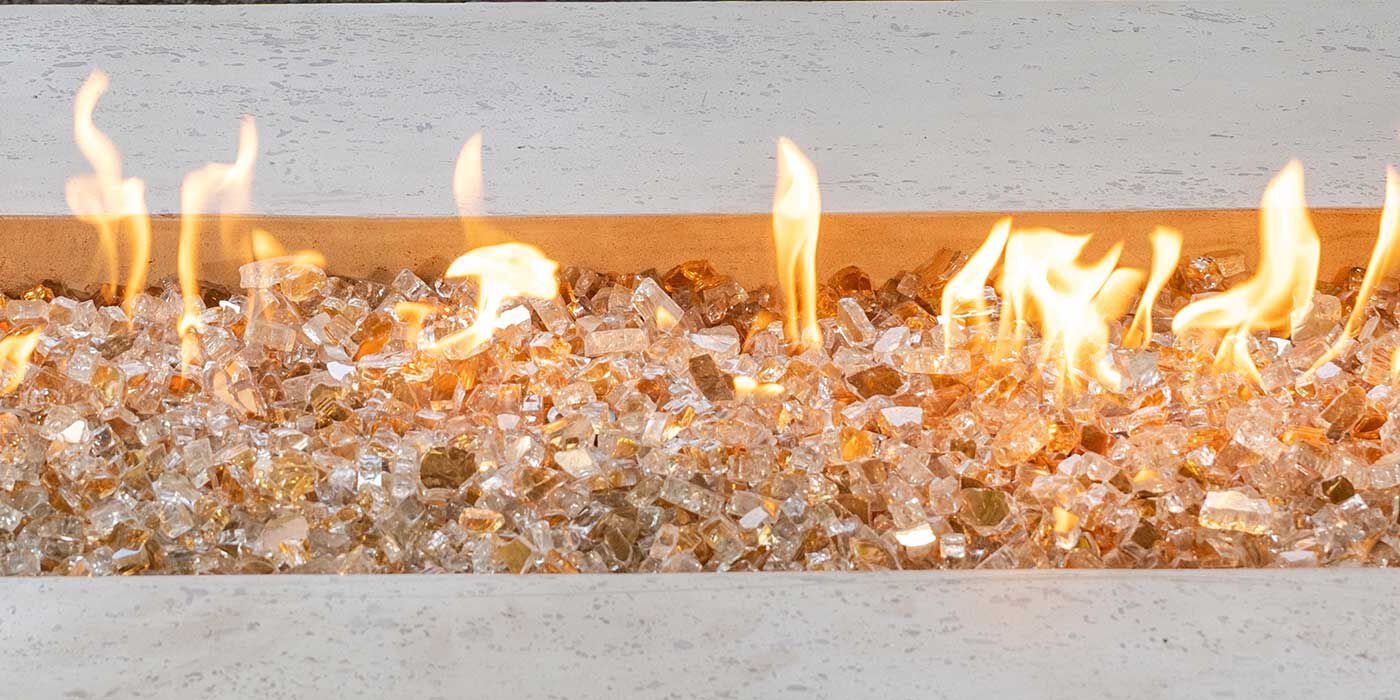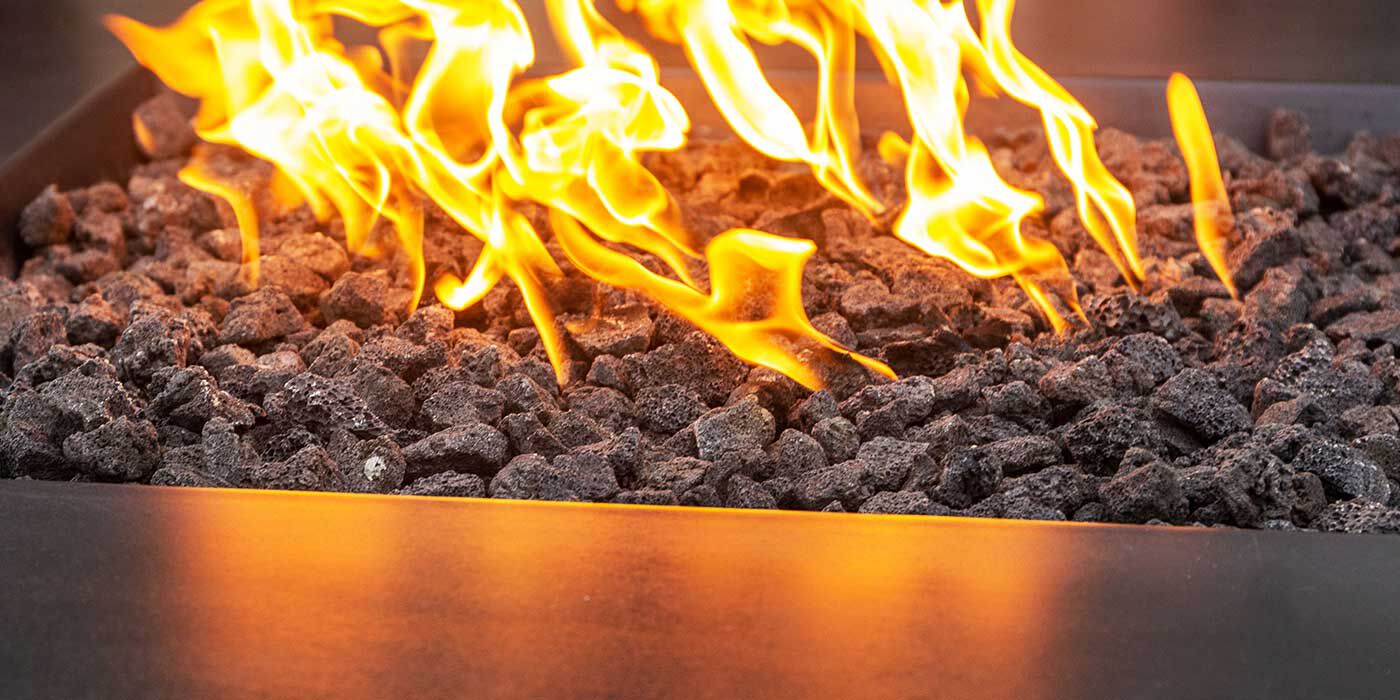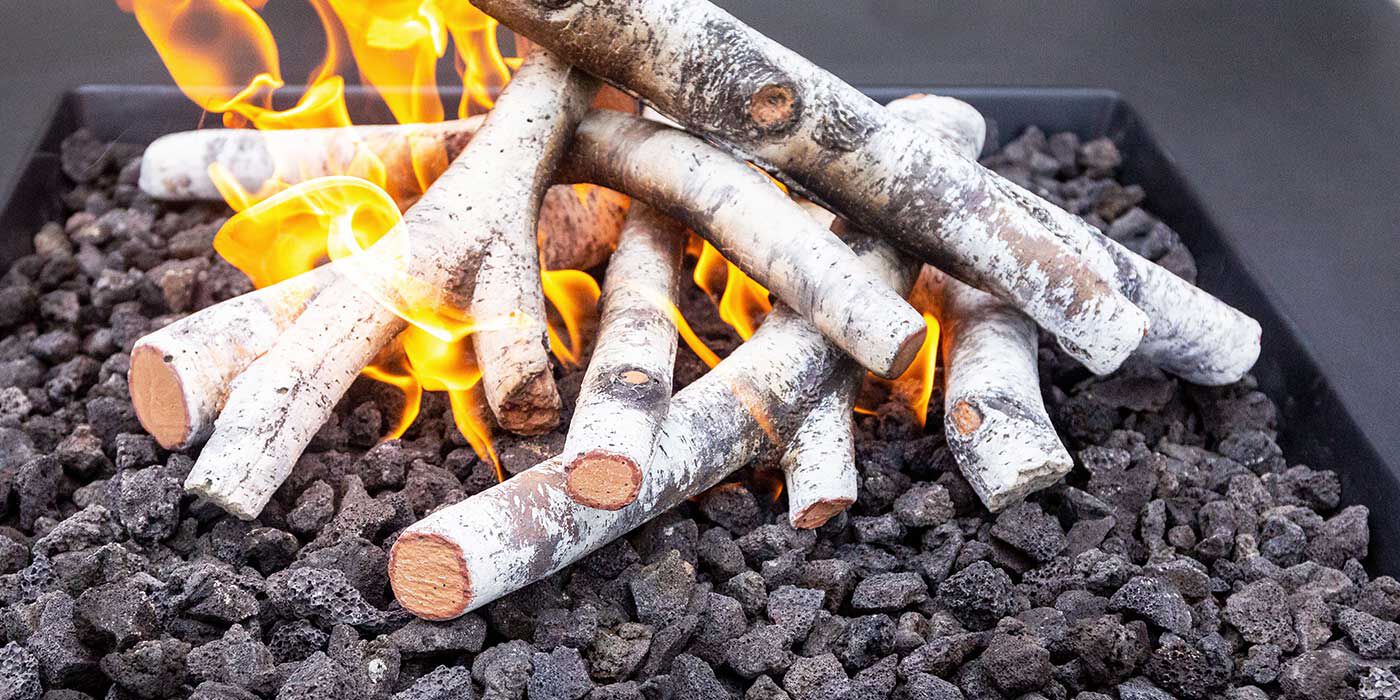By: Tom Regis, NFI Certified Master Hearth Professional
Last Updated: December 19, 2024
Fire pits are among the most popular outdoor design features, not only for the incredible ambiance they provide but also because they keep your outdoor retreat open longer.
By adding a cozy central gathering spot to your backyard or patio, you can enjoy comfortable evenings outside later into fall and earlier in the spring!
There are two types of fire pits you can install, characterized by the kind of fuel they burn — wood and gas.
Building a wood burning or gas fire pit is no small task, as both models require careful planning, specific components to function, and installation experience.
This is where a gas professional comes in handy. Hiring a professional to build your wood or gas fire pit is the best way to ensure it includes all the features you want and operates safely.
Working with a professional saves considerable time on your fire project, since they'll know exactly which parts you'll need and how to install them correctly the first time around. A professional can also help you decide which materials and components will provide the fireside experience you desire.
Below, we've outlined the key decisions you'll need to make and why it's important to hire a professional to complete your DIY wood or gas fire pit, so you can start creating memories around the fire.
Burning Wood Vs Using Gas
The first decision you'll need to make is what kind of fuel you want to burn — wood or gas.
Wood burning fire pits offer an authentic campfire-like experience, complete with crackling flames and smoldering logs, while gas fire pits let you customize your flame presentation with the burner system of your choice.
Gas also burns cleanly and produces fewer emissions than wood, which makes gas fire pits more eco-friendly and energy efficient.
You can learn exactly how wood burning fire pits work and which accessories you’ll need here, or you can discover the components of a gas fire pit and how they operate here.
Wood Burning Fire Pits
Wood burning fire pits are easier to install than gas fire pits. Once you have your enclosure complete, you’ll simply add in kindling and logs and you’re ready to relax!
With a wood burning fire pit, you'll need to have a reliable source of firewood and a dry place to store your wood pile.
It can be a challenge to keep a wood fire pit burning for a long time, because you'll need to add more logs and kindling as you use it. However, most homeowners find that the nostalgic, comforting atmosphere offered exclusively by a real wood burning fire pit makes the extra effort worthwhile.
Wood fire pits also produce smoke and the distinct smell of burning timber. If you’re looking for a smokeless, odorless experience, a gas fire pit is the best option.
Pro Tip:
Since wood piles often attract termites, you’ll need to make sure you store your firewood far away from your house or any other structure.
Gas Fire Pits
Though they are a bit more expensive and complex than wood fire pits, gas fire pits offer ultra-convenient operation, extra safety, and little-to-no maintenance.
Gas fire pits also burn cleanly and don’t emit any smoke or smell.
You can quickly ignite your gas fire pit with the push of a button or flip of a switch. It will receive a constant flow of fuel, so you won’t have to worry about tending to the fire to keep it lit.
When you’re done using your gas fire pit, you’ll be able to turn it off just as quickly as you turn it on and won’t have to monitor the fire to make sure it’s completely extinguished.
Before you build your gas fire pit, you’ll need to decide which kind of fuel best suits your lifestyle — Natural Gas or Propane.
Permanent Fire Pits
If you’d like to make your fire pit a more permanent part of your outdoor space, having a Natural Gas line installed on your property is the best solution.
You will need to hire a licensed gas professional to install a Natural Gas line and route it to your gas fire pit.
With a Natural Gas fire pit, you’ll also need to purchase a burner, burner pan, and ignition system.
The type of burner you choose will dictate your flame presentation and the ignition system you install will determine how you’ll light and operate your fire pit.
There are a variety of ignition systems available, from standard match-lit to user-friendly electronic systems. You can learn all about the different types of ignition systems here to pick the best one for your project.
Pros and Cons of Natural Gas Fire Pits
Pros:
- Easy to use
- No smoke or smell
- Permanent installation
- Constant source of fuel (no need to refill Propane tanks)
Cons:
- More expensive to install
- Requires professional installation of a Natural Gas line
- Cannot accommodate cooking
Portable Fire Pits
Using Propane is ideal if you want a portable gas fire pit that doesn’t require much installation. Similar to Natural Gas configurations, Propane fire pits stay lit with a steady flow of gas.
You can hook your fire pit up to a standard, 20-lb. Propane tank or, if you have a large Propane tank on-site, you can hire a gas professional to route your fire pit to it. Either way, you won’t have to worry about adding more fuel to your fire pit once it’s lit.
You must store your Propane tank directly outside of the fire pit — usually within 10 feet — which means your tank will be visible. For homeowners looking for a more streamlined look, hiring a gas professional to route a Natural Gas line to your fire pit is the ideal choice.
Just like Natural Gas fire pits, Propane fire pits require a burner, burner pan, and ignition system to operate.
Pros and Cons of Propane Fire Pits
Pros:
- Portable
- Easy to use
- Budget-friendly
- Minimal installation
- No smoke or smell
Cons:
- Propane tank is visible
- Must refill empty Propane tanks
- Cannot accommodate cooking
Which Fuel Type Should You Choose?
Find a Safe Location
Before you can decide on a location for your wood or gas fire pit, you’ll need to check your city’s code and ordinances regarding residential fire pits.
For example, some areas implement strict “burn bans” during certain times of the year, while other cities and states have outlawed the use of wood fire pits altogether.
No matter which type of fire pit you’re building, it must sit on a flat, level surface, and never under low-hanging trees or plants, or near buildings or combustible materials.
The amount of clearance you’ll need around the sides of the fire pit and above the burner area will depend on how large your fire pit is and what kind of fuel you’re using.
You should plan for at least 3 feet of clearance around each side of your fire pit, and at least 6 feet above the burner.
The fire pit should also be located at least 20-25 feet away from your house or other combustible structure, such as a shed or pool house.
The gas professional you work with will be able to assess your property and determine the best location for your gas fire pit.
Pro Tip:
Wood burning fire pits tend to be slightly larger than gas fire pits, because they need to be able to hold kindling and logs. Be sure to take the extra clearance requirements for a wood fire pit into consideration when choosing your final location.
Create Your Enclosure
The fire pit enclosure houses the wood or burner and gas components.
You can build your own enclosure from scratch or purchase a pre-assembled unfinished enclosure and finish it with the material of your choice.
There are also fire pit kits available that include all of the components you’ll need to build a fire pit from the ground up.
DIY Enclosures
To build your own enclosure, you’ll need a supply of non-combustible material to stack, such as:
- Masonry bricks
- Clay
- Tile
- Rocks
- Stones
Masonry bricks can help you achieve a traditional, timeless finish, and you’ll be able to safely stack them as high as you’d like.
Alternatively, you can mix and match stones of various sizes, shapes, and colors to create a custom surround with a natural feel or stack flat rock for a unique, layered look.
For extra durability, you can build your fire pit enclosure from solid cement pads. You’ll even have the option of adding color to the cement mixture to design a custom look that matches your space perfectly.
The Necessories Steel Fire Ring Insert is a great solution for building a concrete, wood burning fire pit. The ring is made of durable steel and features a generous 31-inch width and 7-inch height.
Once you construct your custom enclosure, simply insert the fire ring inside the opening and your fire pit project is complete!
Pre-Made Enclosures
If you aren’t crazy about the idea of building your own enclosure, there are pre-assembled, unfinished enclosures available to make your project a lot easier.
For example, the Round Unfinished Gas Fire Pit Kit by HPC features a welded steel frame and durable Hardie Board shell that create a solid foundation for your material and give you the freedom to experiment with different finishes.
Gas fire pits also require at least two built-in air vents on opposite sides of the fire pit enclosure to make sure it receives enough ventilation to burn properly.
Fire Pit Kits
Purchasing a fire pit kit takes the guesswork out of building a fire pit from scratch because it comes with the essential components you’ll need for installation. There are kits available for both wood and gas fire pit projects.
The Necessories Grand Fire Pit Kit saves significant time on your DIY wood burning fire pit with its straightforward assembly. The kit includes a 31-inch steel fire ring, fire ring blocks, and pre-formed bricks in two colors options. It also comes with Super-Stik mortar adhesive to eliminate uneven surfaces on your fire pit enclosure.
Additionally, Firegear’s Round DIY Fire Pit Kit makes it easy to build a gas fire pit to your specifications. It’s available in multiple sizes and comes with a vent kit, a flexible frame, lava rock media, a control panel kit, a round or square stainless steel burner pan, and a match-lit or push-button ignition system.
Finish Your Fire Pit with Burning Media
If you’re building a gas fire pit, you’ll need to add burning media.
There is an assortment of media styles available to help you achieve the look you’re going for, including fire glass, fire beads, firestones, lava rock, or ceramic logs.
Fire Glass
Fire glass offers a modern look and comes in every color you can think of, making it easy to match your outdoor décor. It’s made from color-infused, tempered glass that’s tumbled, so there are no sharp edges on any of the pieces.
Fire glass won't discolor, burn, melt, or emit toxic fumes. It also won't produce any soot, ash, or smoke.
When fire glass is used in a fire pit, it can generate more heat than ceramic logs, which keeps your space nice and warm, while conserving fuel.
Depending on the type of burner you have and how many BTUs will be emitted, fire glass typically radiates 3-4 times more heat with its reflective surface than wood or artificial logs.
Lava Rock
Lava rock increases combustion efficiency and provides a timeless, natural look for your fire pit.
These rocks are fire-safe and act as an excellent filler when used with ceramic logs or fire glass. Since Lava Rock is naturally formed, the size and shape of each rock will vary.
Pro Tip:
Do NOT use river rocks or regular stones in your gas fire pit. The stones may contain water and when heated, could explode from steam build-up.
Gas Logs
Outdoor gas logs create a rustic, natural look for your gas fire pit.
Gas logs are a great solution if you want the appearance of a real wood burning fire pit, without the mess and maintenance that goes with it.
One of our most popular outdoor log sets, the Grand Canyon Arizona Weathered Oak Fire Pit Log Set, is designed to be used with a variety of burner styles and accommodates fire pits of all shapes and sizes.
You can also use a gas log system, which includes an outdoor-rated burner with a high heat output.
For example, the Grand Canyon Round Tall Outdoor Gas Log Set is equipped with a stainless steel, ring-style burner and comes with multiple ignition options.
Make Sure Your Fire Pit is Legal
Before you can build a fire pit on your property, you'll need to check your local fire department for city codes and ordinances regarding residential fire pits.
Laws vary, depending on the area you live in, so you may need to acquire a permit or additional insurance before installation.
Call the Pros for Help
Once you’ve determined what kind of fire pit you want to build, where it can go, and the components you’ll need, it’s time to reach out to the professionals.
While it’s tempting to try and do it all yourself, installing a fire pit without the proper training can result in serious property damage, injuries, and even death, in extreme cases.
A licensed gas professional will be able to quickly evaluate your outdoor space to help you find the best spot for your gas fire pit, install the gas line if you need one, and hook up your fire pit components properly to guarantee a safe and relaxing fireside experience for years to come.
We're Here to Help
Have more questions about building a fire pit? We'd love to help! Call our team of NFI certified experts today at 800.919.1904.
More Resources
Still stuck on which fuel to use? Discover the differences between Propane and Natural Gas fire pits.
Learn about the different ignition types to find the best way to light your fire pit.
Keep your gas or wood burning fire pit in tip-top shape with these important safety & maintenance tips.
 |
Thomas Regis has been a Technical Sales Representative at Woodland Direct for four years. An NFI-Certified expert, Thomas effortlessly directs his clients toward the perfect products, offering essential installation and safety advice. He's tackled projects of all sizes, from backyard fire pits to custom indoor fireplaces. He has even helped Amy Adams, owner of the Tennessee Titans, find a new fireplace for her home! Beyond his professional achievements, Thomas actively participates in community service projects and enjoys spending time on the basketball court. Call him or one of our experts in fire at 800.919.1904. |
